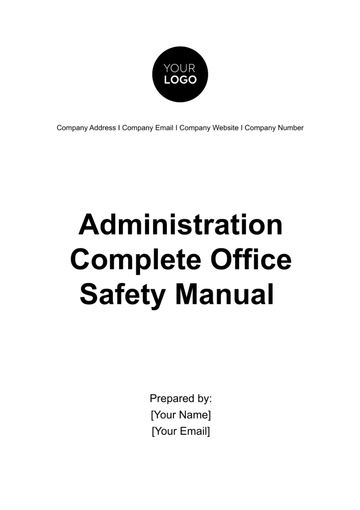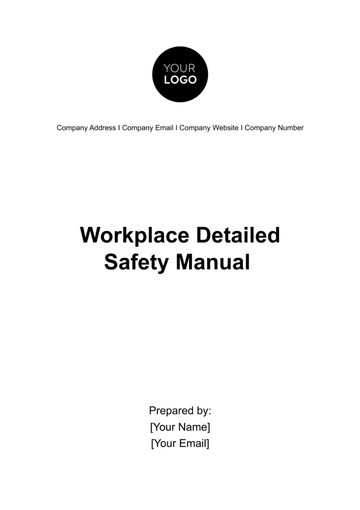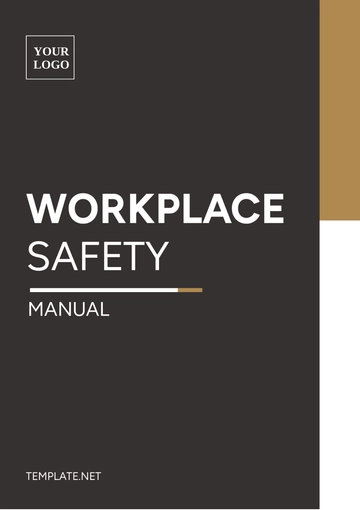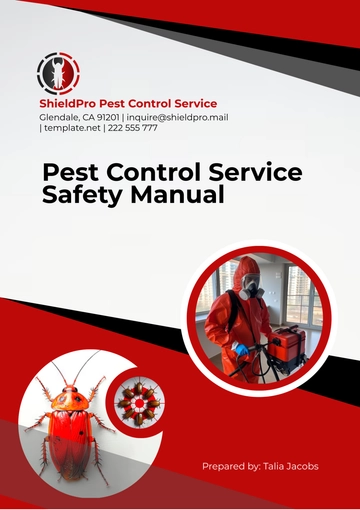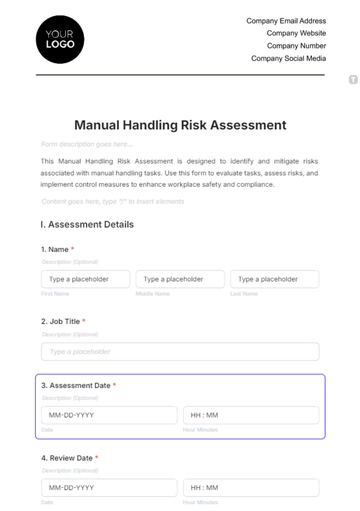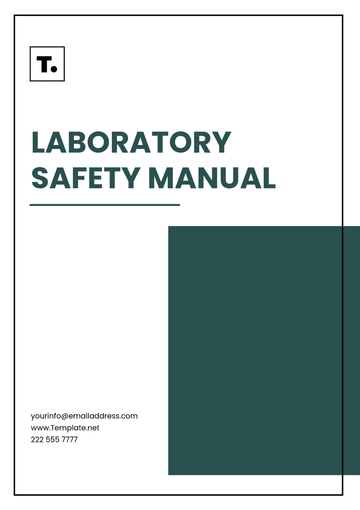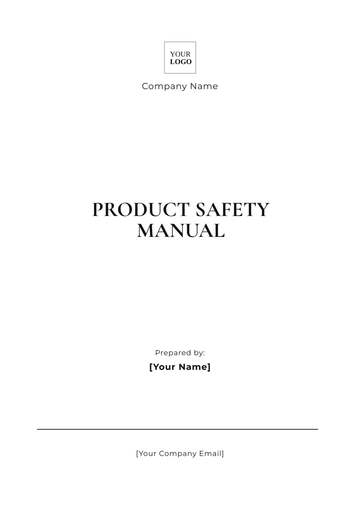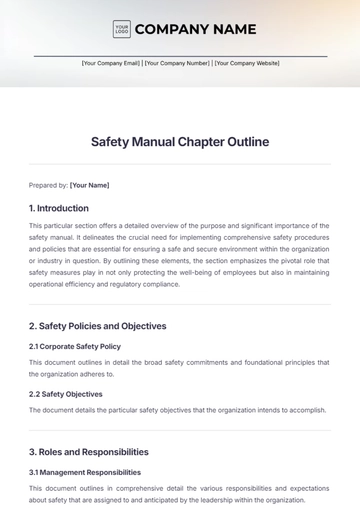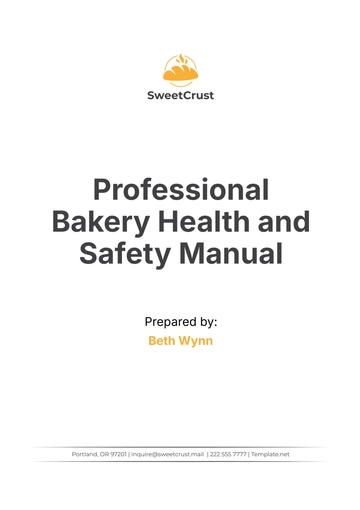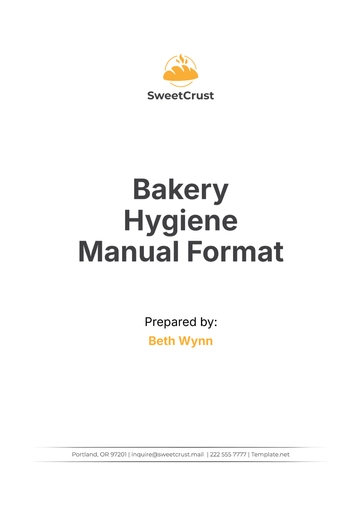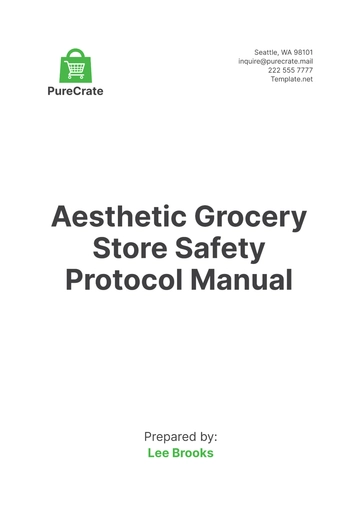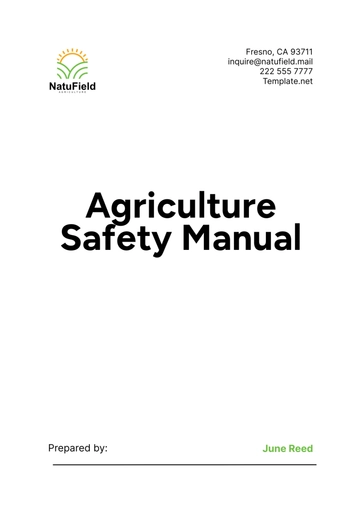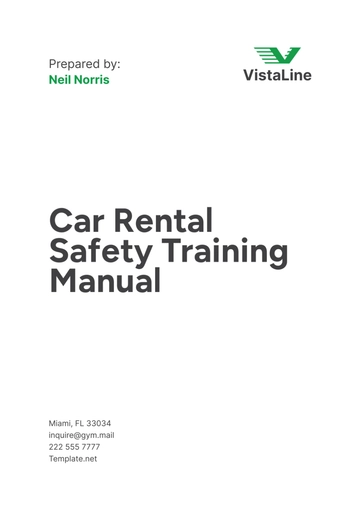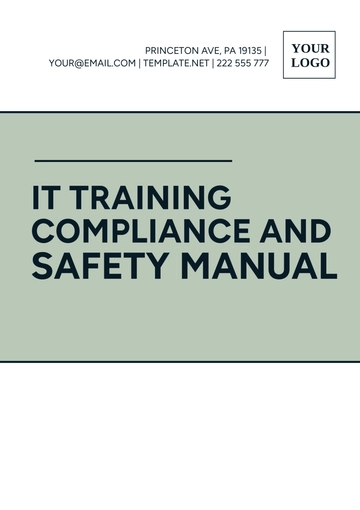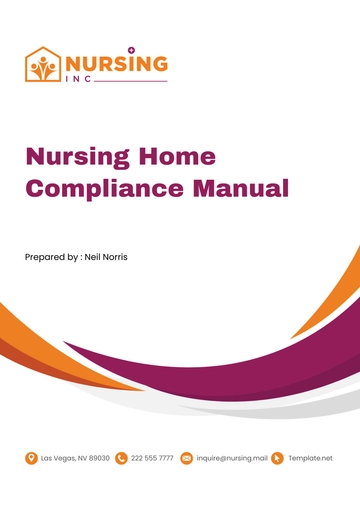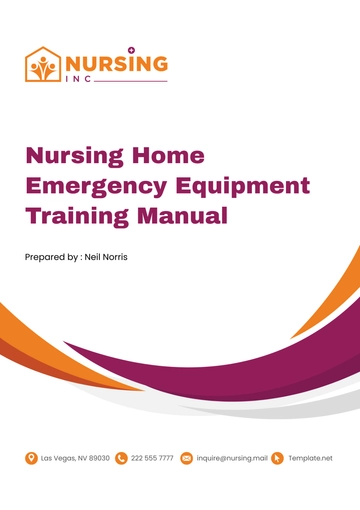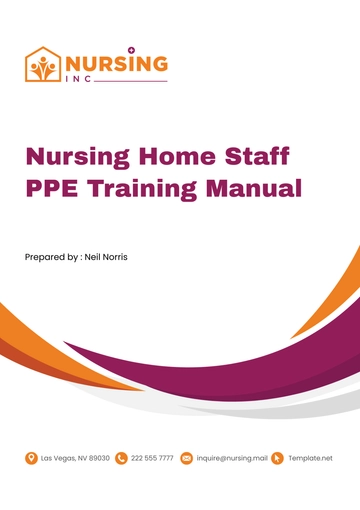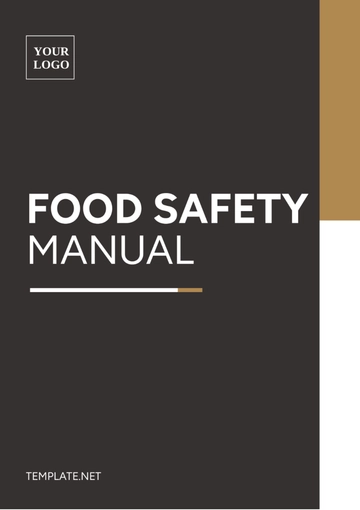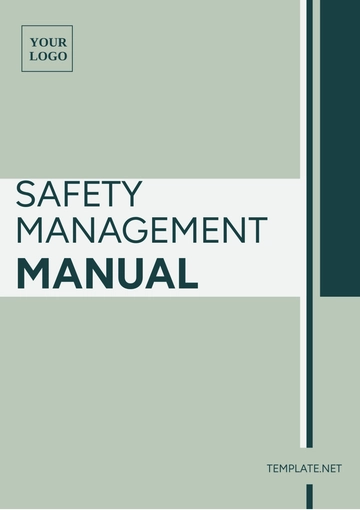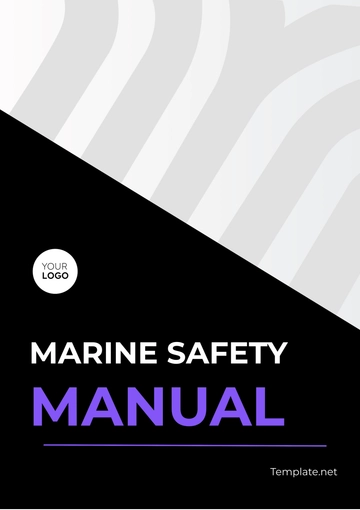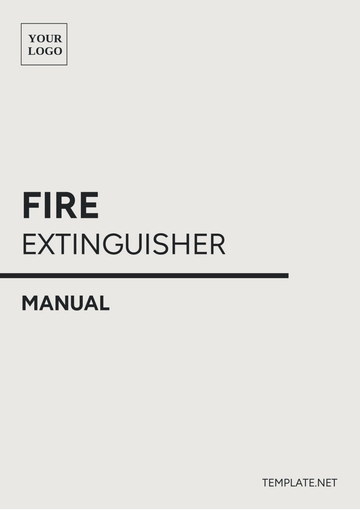Free Health & Safety Committee Manual
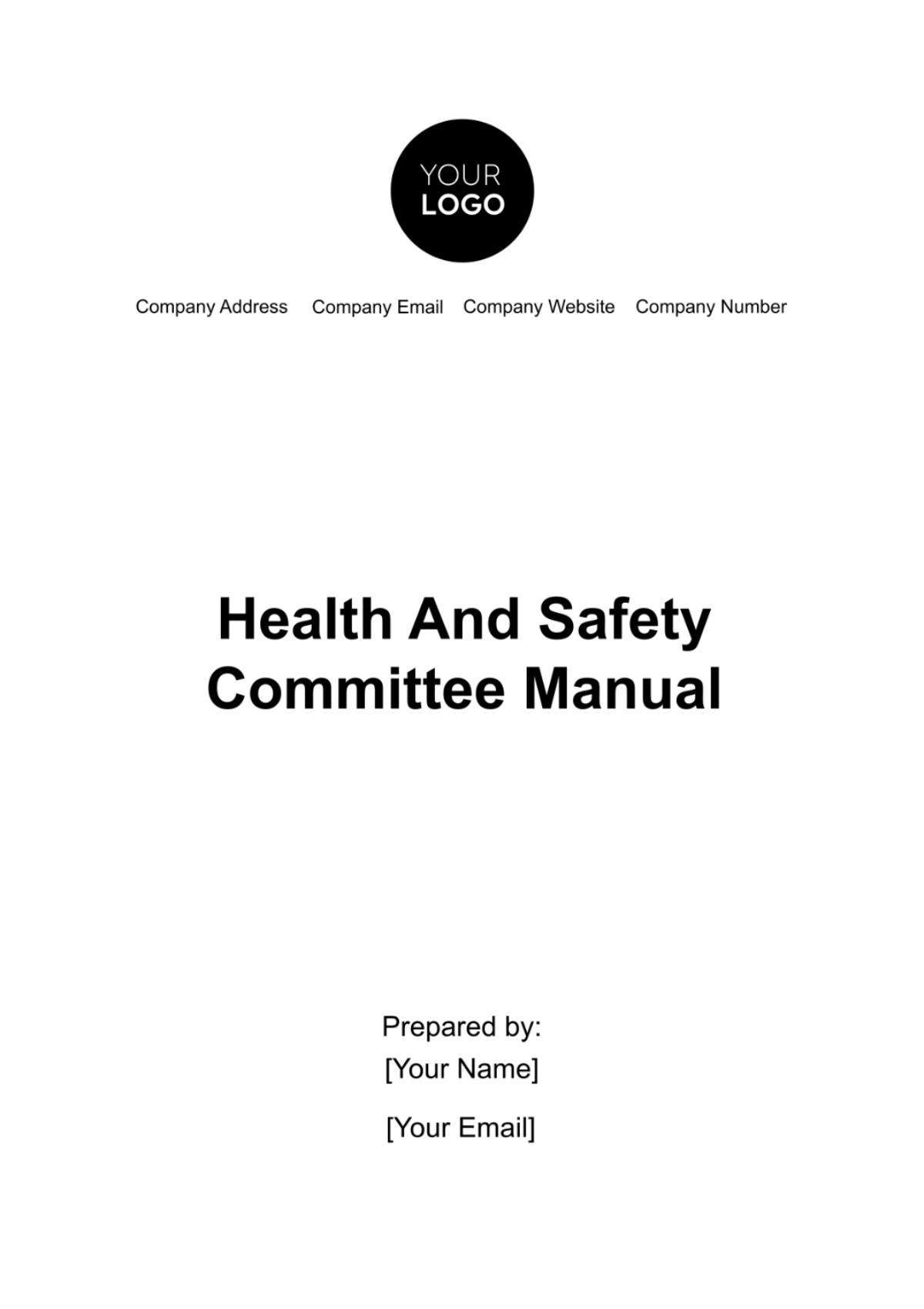
Introduction
A. Purpose
The purpose of this Health and Safety Committee Manual is to establish a framework for promoting and maintaining a safe and healthy workplace within [Your Company Name]. This manual outlines the roles, responsibilities, policies, and procedures that the Health and Safety Committee will follow to achieve this goal.
B. Scope
This manual applies to all employees, contractors, visitors, and stakeholders of [Your Company Name]. It encompasses all aspects of health and safety within the organization, including hazard identification, risk assessment, incident reporting, and emergency response.
C. Legal Framework
[Your Company Name] operates in compliance with all relevant federal, state, and local laws and regulations governing workplace health and safety. The Health and Safety Committee will ensure that the organization adheres to these legal requirements.
Health and Safety Committee Structure
A. Committee Members
The Health and Safety Committee consists of dedicated members from various departments and levels within the organization. These members are appointed based on their expertise and commitment to health and safety.
B. Roles and Responsibilities
1. Chairperson
The Chairperson is responsible for leading committee meetings, setting the agenda, and overseeing the overall functioning of the committee.
2. Vice-Chairperson
The Vice-Chairperson supports the Chairperson and assumes their duties in their absence.
3. Secretary
The Secretary is responsible for documenting meeting minutes, maintaining records, and managing committee correspondence.
4. Members
Committee members actively participate in meetings, contribute to discussions, and assist in implementing health and safety initiatives.
Health and Safety Policies
A. Company Policies
[Your Company Name] is committed to maintaining a safe and healthy work environment for all employees. Our health and safety policies outline our dedication to compliance with all relevant laws and regulations. These policies cover areas such as:
Employee responsibilities for safety.
Reporting procedures for hazards and incidents.
Compliance with safety guidelines and procedures.
The use of personal protective equipment (PPE).
Safety training requirements.
B. Reporting Procedures
In the event of an incident or hazard, employees are required to report it promptly to their immediate supervisor or through our designated reporting system. This ensures that issues are addressed promptly, and corrective actions can be taken to prevent similar incidents in the future.
C. Emergency Response
[Your Company Name] has established clear emergency response procedures, including evacuation plans, assembly points, and emergency contact information. These procedures are communicated to all employees and regularly practiced through drills to ensure everyone's safety in the event of an emergency.
Hazard Identification and Risk Assessment
A. Hazard Identification
Identifying hazards in the workplace is a critical aspect of our safety program. Employees are encouraged to report potential hazards they encounter during their work. Additionally, our Health and Safety Committee conducts regular workplace inspections to identify and assess potential hazards. Hazard identification includes but is not limited to:
Physical hazards (e.g., machinery, electrical equipment).
Chemical hazards (e.g., hazardous substances).
Biological hazards (e.g., pathogens).
Ergonomic hazards (e.g., repetitive tasks).
Psychosocial hazards (e.g., workplace stress).
B. Risk Assessment
Once hazards are identified, a thorough risk assessment is conducted to evaluate the likelihood and severity of potential incidents. Risk assessments help us prioritize hazards and determine the appropriate control measures to reduce or eliminate risks. These assessments consider factors such as:
Probability of exposure.
Potential consequences of exposure.
Existing safeguards and controls.
Frequency of exposure.
C. Control Measures
Based on the risk assessment, control measures are implemented to mitigate identified hazards. These control measures may include:
Engineering controls (e.g., machine guards).
Administrative controls (e.g., work procedures).
Personal protective equipment (PPE) requirements.
Training and awareness programs.
Training and Awareness
A. Training Needs Assessment
[Your Company Name] conducts a comprehensive training needs assessment to identify the specific health and safety training requirements for employees. This assessment takes into account factors such as job roles, potential hazards, and regulatory compliance. Training needs assessments are conducted:
When new employees are onboarded.
When job roles change.
When new equipment or processes are introduced.
Periodically to ensure ongoing compliance and competency.
B. Training Programs
We provide a range of training programs to ensure that employees have the knowledge and skills needed to perform their jobs safely. These programs cover topics such as:
Hazard recognition and reporting.
Proper use of personal protective equipment (PPE).
Emergency response procedures.
Safety procedures for specific job roles.
Compliance with relevant regulations.
C. Records and Documentation
Accurate records of all training activities are maintained by [Your Company Name]. These records include:
Employee names and roles.
Training topics and dates.
Instructors' names and qualifications.
Assessment results and certifications.
Incident Reporting and Investigation
A. Reporting Procedures
Employees are encouraged to report all incidents, near misses, and hazards promptly using the designated reporting channels. This reporting can be done electronically or through paper forms, and it ensures that incidents are thoroughly investigated, and corrective actions are taken.
B. Investigation Process
Upon receiving a report, [Your Company Name] initiates a thorough investigation process. This includes:
Identifying the root causes of the incident.
Gathering statements and evidence.
Analyzing contributing factors.
Developing corrective and preventive action plans.
C. Corrective Actions
Based on the findings of the investigation, corrective actions are implemented promptly. These actions are designed to address the root causes and prevent recurrence of incidents. Corrective actions may include:
Process changes.
Training updates.
3. Equipment modifications or replacements.
4. Policy revisions.
Safety Inspections
A. Regular Inspections
[Your Company Name] conducts regular safety inspections to identify and address potential hazards within the workplace. These inspections are carried out by trained members of the Health and Safety Committee. Key aspects of safety inspections include:
Scheduled frequency of inspections (e.g., monthly, quarterly).
Inspection checklists covering various workplace areas.
Documentation of identified hazards and observations.
Immediate corrective actions for critical hazards.
Reporting of inspection findings to relevant departments.
B. Inspection Reports
Detailed inspection reports are generated after each inspection. These reports include:
Date of the inspection.
Names of inspectors.
Areas inspected.
Hazard identification and severity assessment.
Recommendations for corrective actions.
Timelines for implementing corrective measures.
C. Follow-up and Monitoring
The Health and Safety Committee ensures that corrective actions resulting from inspections are implemented within the specified timelines. Follow-up inspections may be conducted to verify the completion and effectiveness of these actions. This process helps us maintain a proactive stance toward workplace safety.
Health and Safety Communication
A. Internal Communication
Effective communication is vital for maintaining a safe workplace. [Your Company Name] ensures that health and safety information is communicated effectively to all employees through various channels, including:
Safety meetings.
Memos and notices.
Training programs.
Intranet resources.
Safety signage.
B. External Communication
In addition to internal communication, [Your Company Name] maintains communication with external stakeholders, including regulatory authorities, emergency responders, and neighboring businesses. This communication includes:
Compliance reporting to regulatory agencies.
Coordination of emergency response plans with local authorities.
Sharing safety information with neighboring businesses when applicable.
Emergency Response and Preparedness
A. Emergency Plans
[Your Company Name] has established comprehensive emergency response plans to address a wide range of potential emergencies, including but not limited to fires, natural disasters, chemical spills, and medical emergencies. These plans include:
Evacuation procedures with designated assembly points.
Emergency contact information for key personnel.
Procedures for alerting employees and visitors during emergencies.
Protocols for notifying emergency services and authorities.
Allocation of responsibilities for emergency response.
B. Evacuation Procedures
Clear and well-documented evacuation procedures are in place to guide employees and visitors to safety in the event of an emergency. These procedures include:
Evacuation routes and exit locations.
Assembly points for accounting for all personnel.
Procedures for assisting individuals with disabilities.
Designation of emergency response team members.
Training and drills to ensure familiarity with evacuation procedures.
C. First Aid and Medical Services
[Your Company Name] provides access to first aid equipment and trained personnel to respond to medical emergencies. This includes:
First aid kits located throughout the workplace.
Designated first aid responders with appropriate training.
Procedures for reporting and documenting medical incidents.
Coordination with local medical services when necessary.
Regular inspection and replenishment of first aid supplies.
Health and Safety Performance Metrics
A. Key Performance Indicators (KPIs)
To measure our health and safety performance, [Your Company Name] has established key performance indicators (KPIs) that align with our safety goals. These KPIs may include:
Incident rates (e.g., recordable incidents, lost time incidents).
Near-miss reporting rates.
Compliance with safety training requirements.
Completion of safety inspections and follow-up actions.
Response times during emergency drills.
B. Data Collection
Accurate data collection is essential for monitoring and improving our safety performance. Data is collected through incident reports, inspection records, training records, and other relevant sources. All data is regularly analyzed to identify trends, areas for improvement, and potential hazards.
C. Reporting
Regular reports on health and safety performance are generated and shared with the Health and Safety Committee, management, and employees. These reports provide insights into our progress and help identify areas where additional measures may be needed to enhance safety.
Continuous Improvement
A. Feedback and Suggestions
[Your Company Name] actively encourages employees to provide feedback and suggestions related to health and safety. Employees are encouraged to share their observations, concerns, and ideas for improvement through designated channels. Feedback can be provided anonymously if preferred, ensuring that all voices are heard.
B. Monitoring and Review
The Health and Safety Committee regularly monitors the effectiveness of safety measures and programs. This includes:
1. Reviewing incident reports and investigation outcomes.
2. Analyzing safety inspection findings and corrective actions.
3. Assessing the impact of training programs on safety awareness.
4. Examining health and safety performance metrics and KPIs.
C. Process Enhancement
Based on the feedback received and the results of monitoring and reviews, [Your Company Name] is committed to making continuous improvements in health and safety. This may involve:
Updating policies and procedures to address emerging risks.
Enhancing training programs to address specific needs.
Implementing new safety technologies and equipment.
Conducting additional safety drills and exercises.
Communicating improvements and changes to all stakeholders.
- 100% Customizable, free editor
- Access 1 Million+ Templates, photo’s & graphics
- Download or share as a template
- Click and replace photos, graphics, text, backgrounds
- Resize, crop, AI write & more
- Access advanced editor
Lead your safety team effectively with Template.net's Health & Safety Committee Manual Template. This comprehensive resource outlines roles, responsibilities, and procedures for health and safety committees, ensuring effective operation. Essential for facilitating a coordinated approach to workplace health and safety. Download now to create a detailed and functional manual for your committee's success.

